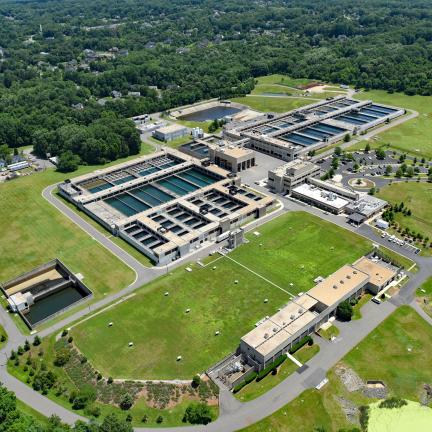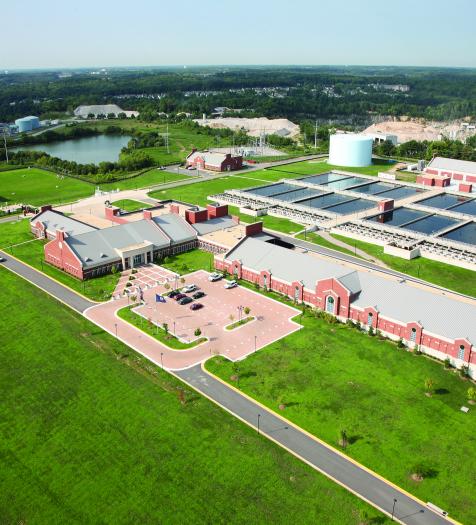Water Treatment Facilites

James J. Corbalis Jr. Plant
The James J. Corbalis Jr. Water Treatment Plant is located in Fairfax County near Herndon at the northern tip of Fairfax Water’s service area. Named after Fairfax Water’s first engineer-director, the Corbalis plant opened in April 1982. At the time of its construction, the plant was part of the largest self-funded public works project in Virginia history, costing $80.6 million to build. To meet the rising demand for water over the past two decades, the facility’s treatment capacity has been expanded from an initial 50 million gallons per day (MGD) to its current 225 MGD capacity. The plant was strategically designed so that it could readily be expanded in increments as the demand for water increased without being taken out of service and with minimal disruption to the community.
The most recent expansion completed in 2008, included upgrades to the plant, such as a new computer-automated control system, improvements to the plant’s electrical system, improvements to the ozone generation and application system and conversion from gaseous chlorine to liquid sodium hypochlorite disinfection. By expanding the Corbalis plant, Fairfax Water will meet anticipated customer demand through 2025.
City of Manassas Plant
Another source of water for our customers is Lake Manassas. Water from the reservoir is treated daily by the City of Manassas Water Treatment Plant. The lake is more than 790 acres and holds approximately 5.3 billion gallons of water at full capacity. Prince William Water purchases 5 MGD for its customers in western Prince William County.
Frederick P. Griffith Jr. Plant
The Frederick P. Griffith Jr. Water Treatment Plant is located in Fairfax County near Lorton at the southern tip of Fairfax Water’s service area. Named for Fairfax Water’s second engineer-director, the Griffith plant opened in July 2006. Meticulously and thoughtfully engineered, it took 13 years to design and build the facility. At the time of its construction, a 10-foot wide tunnel was built under the Occoquan Reservoir in order to deliver raw water 700 feet to a nearby pumping station and on to the plant.
The Griffith plant replaced three older facilities and can treat 120 MGD. The plant is built on the site of the former Occoquan Workhouse, which housed suffragists who were arrested for picketing the White House for the right to vote in 1917. The plant’s architecture mirrors the former workhouse and the prison buildings that still stand across the street. Griffith was built to meet increasingly stringent Environmental Protection Agency (EPA) regulations and incorporates ozone disinfection and granulated activated carbon filtering. The plant was strategically designed so that as the demand for water increases, it can be expanded in increments without being taken out of service and with minimal disruption to the community


